When my day’s work is done
We can take in a jamboree,
But I just wanna sit down by the fire
With my love right here beside me.
We’ve got time to kill,
Catskill,
Sweet by and by.
We’ve got all our love,
The sky above,
The twinkle in your eye.
Now where the wheel might roll
Is where my love and I shall go.
We’re gonna plant the seed,
There ain’t nothing we need,
We found our own rainbow.
My love wants to have her fortune read
And I know that she’s in a hurry.
If we go along the straight and narrow,
You don’t even have to worry.
We’ve got time to kill,
Standin’ still,
Go on, give it a try!
We’ve got all our love,
Mountains of,
The trees are so high. ( Time to Kill, Robbie Robertson, The Band )
With characteristic self-confidence, Peter Paul Rubens once wrote, ”My endowments are such that my courage has always been equal to my enterprise.”
In a world torn by violence and fanaticism and social conflict, one could do worse than heed the following advice: ” We are living in a time when life itself is possible only if one frees oneself from every burden, like a swimmer in a stormy sea”. These words were written in London almost four centuries ago by a man who well knew the dangers he faced. For few seas, before or since, have been stormier than those that threatened to engulf Europe in the early seventeenth-century, and if anyone had a chance of swimming safely to shore, it was the author of that excellent advice: Europe’s most famous living painter, Peter Paul Rubens.
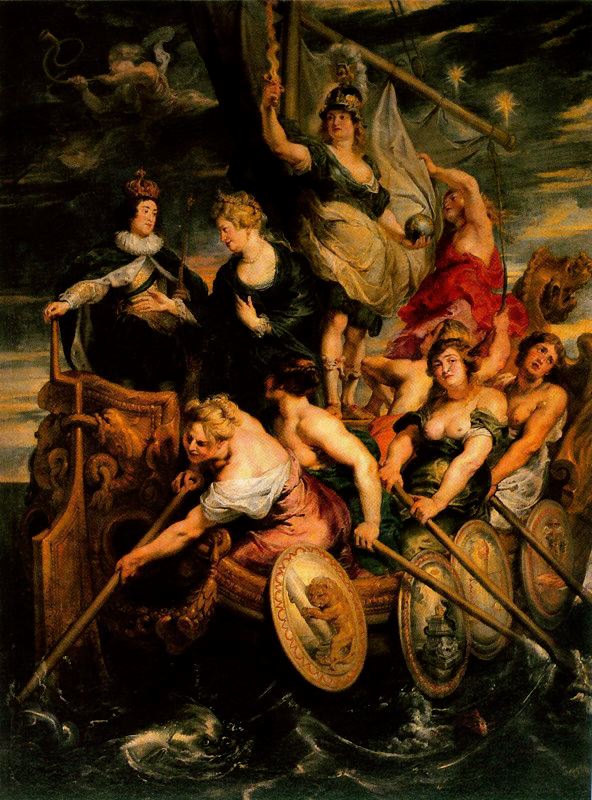
The Majority of Louis XIII. 1623-25. The French ship of state, as Rubens conceived it, fairly pulsates with feminine energy. The craft is powered by four husky oarswomen, and is piloted by the torch bearing figure of France herself. At left, a youthful Louis XIII takes the tiller from his mother, Marie de Medicis.
No doubt there was an element of luck in Ruben’s career, but no man worked harder to command good fortune and no man deserved it more. Endowed with an extraordinary range of gifts, Rubens not only perfected them by sheer hard work but integrated them into a well balanced whole, with the result that of all his works of art, perhaps the greatest was his own personality. His superabundant energy could have been dissipated , his fluency could so evenly have degenerated into mere facility, his amiability into empty charm. As it was, Ruben’s strength of character enabled him to impose his own terms on the world, a world much in need of what he had to offer; humanity, a sense of proportion and inner peace.
With its religious divisions and periodic outbursts of violence, the Netherlands in the latter half of the seventeenth century was a microcosm of Europe. In 1567, the Duke of Alba marched north from Milan at the head of the Spanish army to reimpose order on Philip I
217;s rebellious Low Country provinces, where aristocratic and religious unrest had made common cause against the regime. “Order” was restored, at least temporarily, but at the price of a mass migration of some of the most vigorous elements in Netherlands society: townspeople profoundly unsympathetic to the constricting Counter Reformation Catholicismthat Spain was attempting to impose by force.
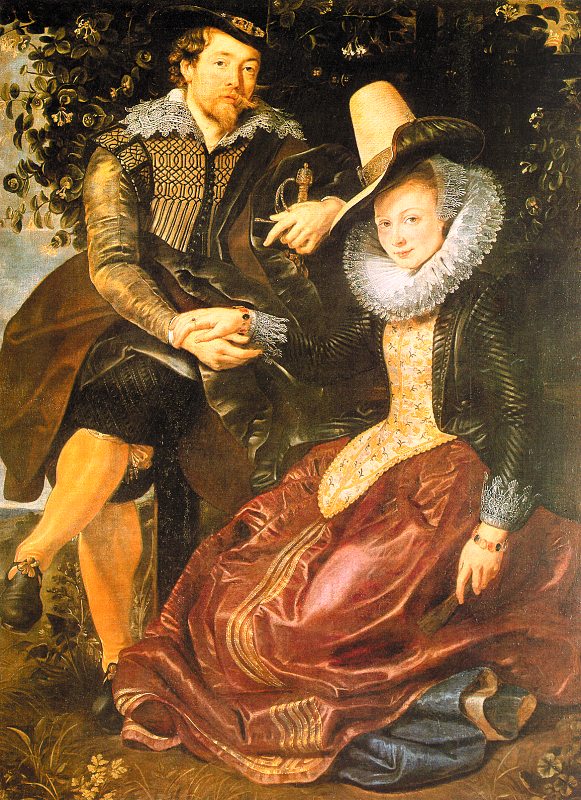
Rubens. The Artist and his Wife Isabella Brandt in the Honeysuckle Bower. 1609. He lost Isabella in 1626, after seventeen years of marriage. Of her, he wrote, ''She had no capricious moods, and no feminine weaknesses, but was all goodness and honesty."
One of these emigres was Rubens father, Jan, a cultivated and debonair lawyer, whose flirtation with Calvinism led him to Cologne. There he became first the secretary and then the secret lover of Anne of Saxony, the wife of Prince William of Orange, the leader of the Dutch resistance to Spain. The eventual discovery of Jan’s relationship with the princess brought imprisonment and the threat of a death sentence, but he won reprieve through the efforts of his wife Maria, a woman whose determination and steadfastness contrasted sharply with the fickle charm of her husband. After Jan’s release two more children were born, including Peter Paul in 1577. Ten years later, Jan Rubens died, and Maria, now restored to good standing in the Catholic church, returned with her family to Antwerp.
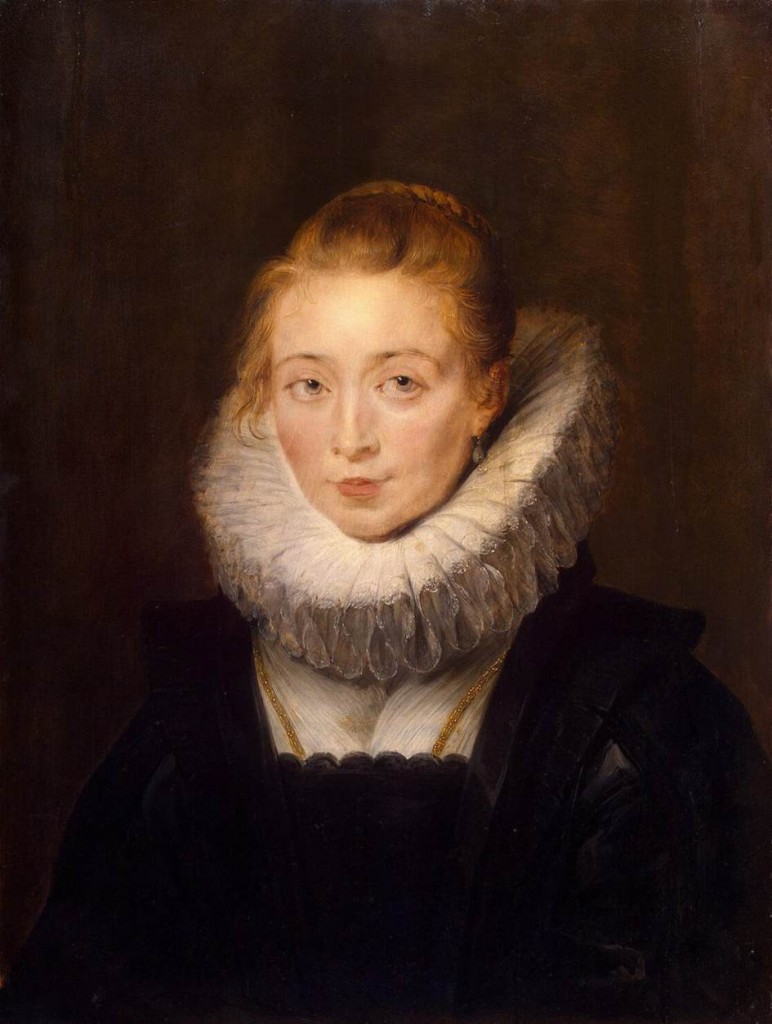
Rubens was stricken with grief when Clara Serena died at the age of twelve."Formerly it was assumed that the sitter was a chambermaid of Infanta Isabella, the Governess of Netherlands. However, it is believed - because of the similarity to a drawing of Isabella Brandt (Rubens' first wife) in the British Museum, London - to be a posthumous portrait of Rubens' daughter Clara Serena (1611-1623)."
Cologne and Antwerp, where Peter Paul Rubens spent what seems to have been a happy childhood and adolesence, lay astride the uncertain frontier that divided Protestant from Catholic Europe. As great trading cities, both were valuable prizes for the warring religious parties; both were hotly contested and eventually brought back under Catholic control in 1585. The Rubens family left Cologne and settled in Antwerp at the very moment when the tide of the Counter Reformation was beginning to sweep back into both cities, bringing in its wake the emissaries of religious revival; monks, friars, priests, revitalized Capuchins and newly formed Jesuits , all of which tended to overwhelm worshippers with a sense of the glory of God, a metaphorical second coming and the victorious march of the Church Triumphant.
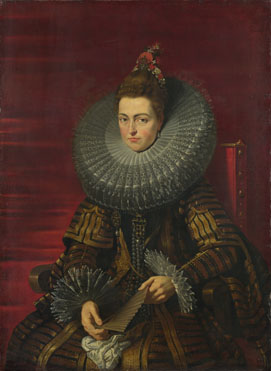
The patrons of Europe,s most famous artist included more than a few kings and queens as well as dukes and duchesses. As artist, and roving diplomat, Rubens served the ruler of the Spanish Netherlands, Archduchess Isabella, for nearly twenty-five years.
It was in this climate of intense and revived Catholicism that Peter Paul Rubens grew up. It was a Catholicism that appealed directly and urgently to the senses, and its color and movement must have had a powerful attraction for anyone with as strong a visual sense as the young Rubens. “It is eviden”, he would write one day, “that religion exerts a stronger influence upon the human mind than any other motive”. Throughout his life he remained a devoted Catholic, though his Catholicism was never narrow and exclusive.
Like the rest of the aristocracy of Antwerp, Rubens was heir to the tolerating humanizing tradituion of the Netherlands that is forever associated with Erasmus. He believed, as Erasmus had, that it was possible to harmonize the doctrines of Christianity and the wisdom of classical antiquity and to place the learning of ancient Greece and Rome at the service of the Church. To men who were secure in their faith, the pagan gods and goddesses, stripped of their power, were allegorical figures who could be set to work in a Christian environment, and pleasant traveling companions through the journey of life.
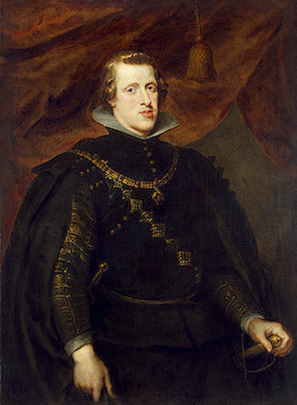
Philip IV of Spain, Ruben's last royal patron. For Philip, Rubens designed more than a hundred decorations for a hunting palace on the outskirts of Madrid.
Erasmus had still dared to hope; but his late sixteenth-century successors, caught between the rival extremisms of Rome and Geneva, came close to despair. And in their despair they turned again to antiquity for consolation. They found it, of a sort, in the writings of Seneca. Stoicism, suitably tempered with Christianity, appeared to offer at least a partial answer to the troubles of the times. At any rate, this was the view of the leading Netherlands humanist of the age, Justus Lipsius, who took Ruben,s brother Philip as a pupil. With Seneca, Lipsius counseled resignation: “We are obliged to endure novelties, and to refrain troubling ourselves about what we cannot prevent”.When Philip died suddenly in 1611, Peter Paul would commemorate his beloved brother in a group portrait showing him and Jan Woverius, a fellow scholar, seated at a table with the great Julius Lipsius, and, in a niche behind them, the bust of Seneca. It is no accident that the artist himself also appears in the picture, for he, too, imbibed, if only at second hand, the teachings of Lipsius and Seneca. It was perhaps from them that he learned to “free himself of every burden, like a swimmer in a stormy sea”.
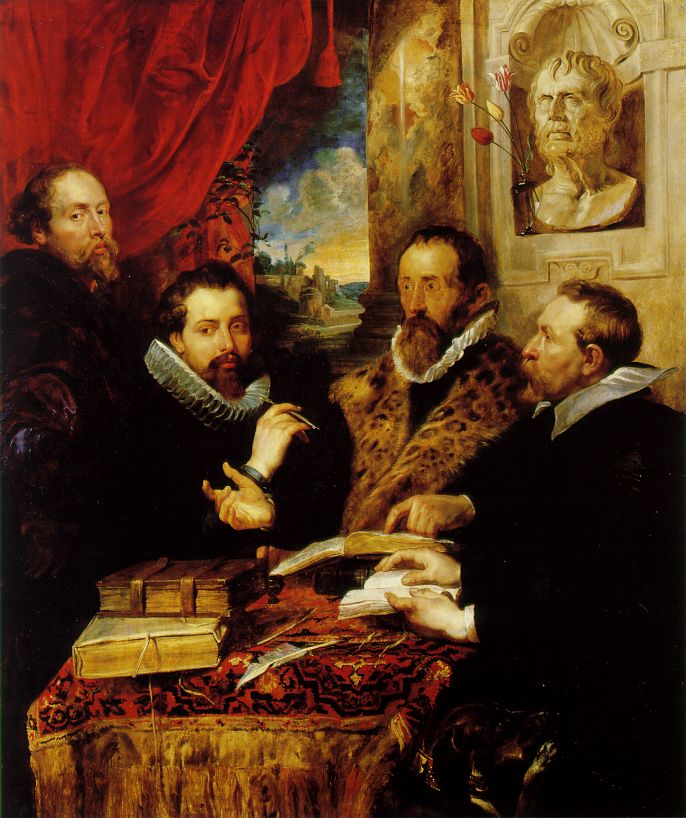
" Portraits, including those in seventeenth-century Antwerp, were not just a mirror of the dominant ethical ideas of the time. They could also, in an equally subtle way, illustrate someone's intellectual role and significance. The group portrait known as the Four Philosophers, which shows Rubens with three humanists, his brother Philip, Johannes Woverius and the teacher of both of them, Justus Lipsius is a typical example. Emblematic details make it clear that Rubens has shown himself with the three humanists in order to express the underlying moral principles of Stoic philosophy, which were also those of the influential Lipsius and the other sitters. They are shown gathered together in homage to Seneca, one of the classical exponents of Stoicism, here represented by his bust. Finally, the ruins of the Palatine in the background show that the picture also pays homage to classical culture in the widest sense, symbolizing the resurrection in their own time of the departed glory of Hellenistic-Roman antiquity."
But if Rubens learned how to be detached, he could not be withdrawn or resigned to fate; his emotions were too strong, and his response to the human condition was too deep. When his first wife, Isabella Brandt, died in 1626 he would write to a friend about his grief; ”I have no pretensions of ever attaining a stoic equanimity; I do not believe that human feelings so closely in accord with their object are unbecoming to man’s nature, or that one can be equally indifferent to all things in this world…Such a loss seems to me worthy of deep feeling.”


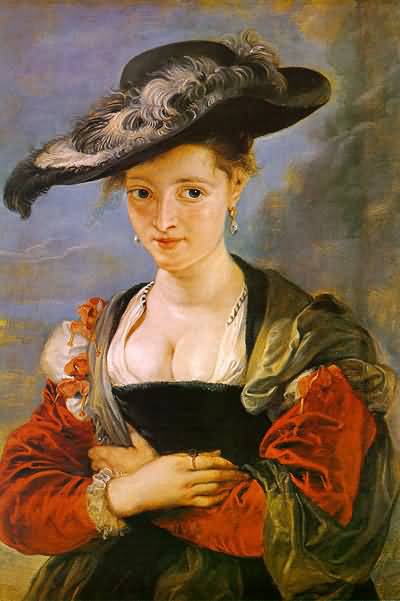






 COMMENTS
COMMENTS



